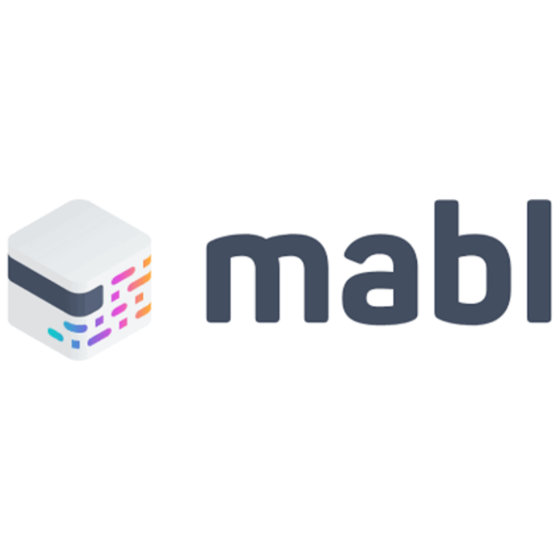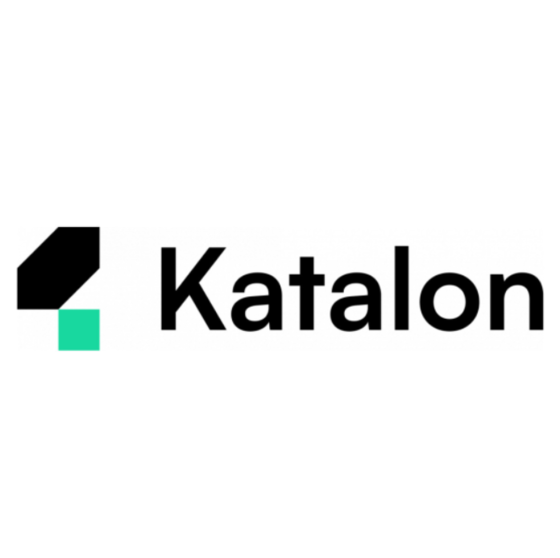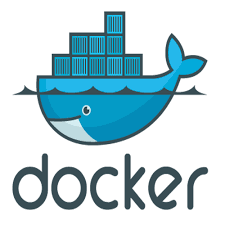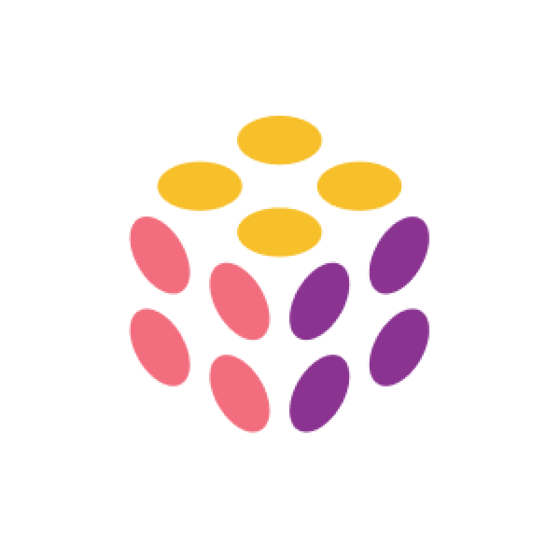Best AI-based Testing Automation Tools Shortlist
Here’s my shortlist of the best AI-based testing automation tools:
Our one-on-one guidance will help you find the perfect fit.
The best AI-based testing automation tools help you run tests at scale, catch bugs earlier in development, and reduce time spent on repetitive test maintenance. They give teams faster feedback, better test coverage, and fewer false positives, especially in CI/CD environments where speed and accuracy are critical.
If you're stuck managing brittle scripts, chasing unreliable results, or struggling with tools that don’t integrate cleanly with your dev stack, you know how frustrating test automation can get. Debugging unstable pipelines or rewriting tests after every minor UI change wastes time and slows down releases.
I’ve worked directly with QA and engineering teams to test AI-driven tools in real build pipelines, measuring how well they adapt to code changes, support key frameworks, and surface reliable insights.
This guide breaks down the tools that actually improve testing workflows, reduce manual cleanup, and support faster, higher-quality software delivery.
Why Trust Our Software Reviews
We’ve been testing and reviewing SaaS development software since 2023. As tech experts ourselves, we know how critical and difficult it is to make the right decision when selecting software. We invest in deep research to help our audience make better software purchasing decisions.
We’ve tested more than 2,000 tools for different SaaS development use cases and written over 1,000 comprehensive software reviews. Learn how we stay transparent & check out our software review methodology.
Best AI-based Testing Automation Tools Summary
This comparison chart summarizes pricing details for my top AI-based testing automation tool selections to help you find the best one for your budget and business needs.
| Tool | Best For | Trial Info | Price | ||
|---|---|---|---|---|---|
| 1 | Best for codeless automation | 14-day free trial available | $440/user/month | Website | |
| 2 | Best for automated visual testing | Free trial available + free demo | Pricing upon request | Website | |
| 3 | Best for cross-platform testing | Free plan available + free demo | From $183/user/month | Website | |
| 4 | Best for cloud-based testing | Not available | Website | ||
| 5 | Best for visual AI testing | Free trial available | Pricing upon request | Website | |
| 6 | Best for enterprise testing | Free trial + demo available | Pricing upon request | Website | |
| 7 | Best for crowdtesting | 14-day free trial | Pricing upon request | Website | |
| 8 | Best for desktop testing | 14-day free trial | From $3,419/user/year | Website | |
| 9 | Best for agile teams | Not available | Pricing upon request | Website | |
| 10 | Best for continuous integration | Free demo available | Pricing upon request | Website |
-

Docker
Visit WebsiteThis is an aggregated rating for this tool including ratings from Crozdesk users and ratings from other sites.4.6 -

Pulumi
Visit WebsiteThis is an aggregated rating for this tool including ratings from Crozdesk users and ratings from other sites.4.8 -

GitHub Actions
Visit Website
Best AI-based Testing Automation Tool Reviews
Below are my detailed summaries of the best AI-based testing automation tools that made it onto my shortlist. My reviews offer a detailed look at the key features, pros & cons, integrations, and ideal use cases of each tool to help you find the best one for you.
ACCELQ is a cloud-based test automation platform for teams looking to implement codeless testing. It serves business analysts and QA engineers by providing tools that streamline the creation and execution of tests without the need for coding expertise.
Why I picked ACCELQ: The platform's codeless automation capabilities enable your team to create tests quickly and efficiently. You can focus on testing logic without getting bogged down in complex scripting.
ACCELQ's intuitive interface and visual test design simplify the automation process. These features make it a great option for teams wanting to speed up testing without dealing with code.
Standout features & integrations:
Features include test management, which helps organize and track your tests effectively. The platform offers change impact analysis to identify how updates affect your tests. With ACCELQ's automated test generation, you can create tests faster and more accurately.
Integrations include JIRA, Jenkins, Slack, GitHub, Bitbucket, Azure DevOps, TestRail, Sauce Labs, BrowserStack, and Bamboo.
Pros and cons
Pros:
- Change impact analysis
- Visual test design
- Intuitive user interface
Cons:
- Dependency on cloud infrastructure
- Limited customization options
Mabl is a cloud-based testing platform primarily used by QA teams and developers who need automated visual testing. It enables teams to efficiently test web applications by providing tools for visual validation and functional testing.
Why I picked Mabl: It excels in automated visual testing, ensuring your web applications maintain their visual integrity across updates. You can easily create and run tests without extensive coding knowledge.
Mabl's smart reporting offers insights into test results, helping your team identify issues quickly. This focus on visual testing makes it a great fit for teams prioritizing UI consistency.
Standout features & integrations:
Features include auto-healing tests, which reduce maintenance efforts by adapting to changes in the application. The platform provides performance testing to identify bottlenecks and improve application speed. With Mabl's seamless collaboration tools, your team can work together more effectively.
Integrations include JIRA, Jenkins, Slack, GitHub, Bitbucket, Azure DevOps, CircleCI, BrowserStack, Sauce Labs, and TestRail.
Pros and cons
Pros:
- Performance testing features
- Auto-healing tests
- Smart reporting insights
Cons:
- Initial setup complexity
- Occasional false positives
Katalon Studio is a versatile test automation tool primarily used by testers and developers who need to perform cross-platform testing. It supports web, mobile, and API testing, providing an all-in-one solution for diverse testing needs.
Why I picked Katalon Studio: Its ability to perform cross-platform testing efficiently makes it unique. You can test web applications, mobile apps, and APIs using a single tool. The platform provides built-in keywords and templates that simplify test creation.
Additionally, its user-friendly interface helps your team quickly adapt and start testing across different platforms.
Standout features & integrations:
Features include scriptless test creation, which allows you to write tests without coding. The tool also offers advanced reporting and analytics to help you track your testing progress. With its support for parallel execution, you can run multiple tests at the same time, saving valuable time.
Integrations include JIRA, Jenkins, Git, Slack, TestRail, Kobiton, Sauce Labs, qTest, Zephyr, and Azure DevOps.
Pros and cons
Pros:
- User-friendly interface
- Parallel test execution
- Advanced reporting features
Cons:
- Occasional performance issues
- Limited support for complex scenarios
Functionize is a cloud-based testing platform for teams needing scalable test automation. It caters to QA engineers and developers who require efficient testing of web applications. The tool offers a unified testing solution that enhances collaboration and speeds up test execution.
Why I picked Functionize: Its cloud-based nature allows you to run tests without worrying about infrastructure. Functionize uses machine learning to create and maintain tests, reducing the manual effort involved.
The platform's smart test maintenance feature automatically updates tests as your application changes. These capabilities make it ideal for teams looking for scalable and efficient testing solutions.
Standout features & integrations:
Features include the ability to execute tests in parallel, which saves time and resources. The tool offers visual testing to ensure your application's UI looks correct across different browsers. With its detailed analytics, you can track test performance and identify areas for improvement.
Integrations include JIRA, Jenkins, Slack, GitHub, Bitbucket, TestRail, Azure DevOps, CircleCI, Sauce Labs, and BrowserStack.
Pros and cons
Pros:
- Parallel test execution
- Smart test maintenance
- Machine learning-driven tests
Cons:
- Dependency on internet connectivity
- Requires initial setup time
Applitools is a visual testing and monitoring platform tailored for developers and QA teams focusing on UI consistency. It ensures that web and mobile applications render correctly across different devices and browsers, providing visual validation and cross-browser testing.
Why I picked Applitools: Its visual AI testing capabilities are unmatched, providing precise UI validation. The tool leverages AI algorithms to detect visual bugs that might go unnoticed with traditional testing methods.
You can easily integrate Applitools into your existing CI/CD pipelines to enhance your testing process. This focus on visual accuracy makes it ideal for teams prioritizing user interface consistency.
Standout features & integrations:
Features include cross-browser testing, which helps ensure your application looks consistent across different browsers. The platform offers detailed test analytics, giving you insights into test results and performance. With Applitools' automated maintenance, your team can focus on development without worrying about test upkeep.
Integrations include JIRA, Jenkins, GitHub, GitLab, Bitbucket, Travis CI, CircleCI, BrowserStack, Sauce Labs, and TestRail.
Pros and cons
Pros:
- Automated test maintenance
- Detailed test analytics
- Cross-browser testing
Cons:
- Dependency on cloud services
- Requires initial setup effort
OpenText UFT One is a comprehensive testing tool designed for enterprise-level QA teams and developers. It facilitates automated testing across various platforms, ensuring application quality and performance at scale.
Why I picked OpenText UFT One: It excels in enterprise testing by supporting a wide range of applications and environments. The tool offers both GUI and API testing, making it versatile for different testing needs.
You can benefit from its cross-platform capabilities, ensuring consistency across various operating systems. These features make it ideal for large organizations looking to maintain high-quality standards in complex environments.
Standout features & integrations:
Features include the ability to conduct both functional and regression testing, ensuring comprehensive coverage. The platform offers intelligent object recognition, which enhances the accuracy of test scripts. With its advanced reporting capabilities, your team can gain insights into testing progress and results.
Integrations include Jenkins, JIRA, GitHub, Azure DevOps, ALM, Selenium, LoadRunner, TeamCity, Bamboo, and ServiceNow.
Pros and cons
Pros:
- Suitable for large organizations
- Advanced reporting features
- Cross-platform testing capabilities
Cons:
- Limited customization options
- High resource consumption
Rainforest QA is a cloud-based testing platform that provides crowdtesting services for QA teams and developers. It allows you to perform manual and automated tests using a community of testers, ensuring your applications are thoroughly checked before release.
Why I picked Rainforest QA: It offers a unique crowdtesting approach, allowing you to leverage a community of testers for diverse insights. You can run tests without needing in-house resources, which saves time and effort.
The platform's easy setup and intuitive interface make it accessible for teams of all sizes. This makes it an excellent choice for those seeking flexibility and thorough testing coverage.
Standout features & integrations:
Features include on-demand testing, which allows you to run tests whenever needed without scheduling. The platform provides detailed test reports, helping you analyze results and improve your application. With its parallel testing capabilities, you can execute multiple tests simultaneously, speeding up the process.
Integrations include JIRA, GitHub, Slack, Jenkins, CircleCI, GitLab, Bitbucket, Azure DevOps, TeamCity, and Trello.
Pros and cons
Pros:
- On-demand testing flexibility
- Easy setup process
- No in-house resources needed
Cons:
- Occasional delays in test execution
- Limited control over tester selection
TestComplete is a test automation tool for developers and QA teams who need to perform desktop application testing. It caters to those looking to automate UI testing for a variety of applications, providing a comprehensive solution for ensuring application quality.
Why I picked TestComplete: Its ability to handle desktop testing sets it apart from other tools. You can automate UI testing for Windows applications with ease and precision.
The tool's script and scriptless options allow flexibility in test creation, catering to both technical and non-technical users. This makes it an excellent choice for teams with diverse skill sets who need to focus on desktop application quality.
Standout features & integrations:
Features include keyword-driven testing, which simplifies test creation by using predefined actions. The platform offers parallel test execution, allowing you to run multiple tests simultaneously to save time. With its object recognition capabilities, TestComplete ensures accurate identification of UI elements across different applications.
Integrations include JIRA, Jenkins, Git, Azure DevOps, Zephyr, Bugzilla, ALM, Slack, TeamCity, and Rally.
Pros and cons
Pros:
- Keyword-driven testing
- Parallel test execution
- Script and scriptless options
Cons:
- Initial setup complexity
- Requires technical expertise
Testim is a testing automation platform designed for agile teams looking to accelerate their release cycles. It serves developers and QA engineers by providing automation solutions that enhance testing speed and accuracy.
Why I picked Testim: Its focus on agile teams is evident in its ability to quickly adapt to changes in your application. The tool uses machine learning to improve test stability and reduce maintenance.
Its smart locators automatically adjust to UI changes, ensuring tests remain reliable. These features make it a perfect fit for teams aiming to maintain agility in their development processes.
Standout features & integrations:
Features include a visual editor, which allows you to create tests without extensive coding knowledge. The platform offers test case management to organize and track your tests efficiently. With its detailed reporting, you can gain insights into test results and performance.
Integrations include JIRA, Jenkins, Slack, GitHub, GitLab, Bitbucket, TestRail, Azure DevOps, CircleCI, and Sauce Labs.
Pros and cons
Pros:
- Detailed reporting
- Visual test creation
- Machine learning enhancements
Cons:
- Learning curve for beginners
- Limited offline capabilities
Digital.ai Continuous Testing is an automated testing platform tailored for DevOps teams and developers focused on continuous integration and delivery. It helps streamline the testing process by integrating into CI/CD pipelines, ensuring faster and more reliable software releases.
Why I picked Digital.ai Continuous Testing: Its integration with continuous integration pipelines makes it a valuable tool for DevOps teams. You can automate tests across different stages of the development lifecycle, enhancing efficiency.
The platform provides real-time feedback, allowing your team to quickly address issues. These capabilities make it ideal for teams looking for a solution that supports continuous integration and delivery.
Standout features & integrations:
Features include real-time test analysis, which provides instant insights into test results and performance. The platform offers parallel test execution, enabling you to run multiple tests at once to save time. With its support for both functional and non-functional testing, you can ensure comprehensive coverage of your application.
Integrations include JIRA, Jenkins, GitHub, GitLab, Bitbucket, Azure DevOps, Bamboo, TeamCity, Slack, and Selenium.
Pros and cons
Pros:
- Comprehensive test coverage
- Parallel test execution
- Real-time test feedback
Cons:
- Occasional performance lags
- Requires technical expertise
Other AI-based Testing Automation Tools
Here are some additional AI-based testing automation tools options that didn’t make it onto my shortlist, but are still worth checking out:
- TestCraft
For real-time feedback
- Testsigma
For open-source flexibility
- Reflect
For automated web testing
- LambdaTest
For cross-browser compatibility
- Autify
For no-code test creation
- TestGrid
For on-premise deployment
- BugBug
For browser-based automation
- Diffblue
For Java code analysis
- EvoSuite
For unit test generation
- SeaLights
For code quality insights
AI-based Testing Automation Tool Selection Criteria
When selecting the best AI-based testing automation tools to include in this list, I considered common buyer needs and pain points like the need for reliable test maintenance and the challenge of integrating with existing workflows. I also used the following framework to keep my evaluation structured and fair:
Core Functionality (25% of total score)
To be considered for inclusion in this list, each solution had to fulfill these common use cases:
- Automate repetitive test cases
- Execute tests across multiple platforms
- Integrate with CI/CD pipelines
- Provide detailed reporting and analytics
- Support for both functional and regression testing
Additional Standout Features (25% of total score)
To help further narrow down the competition, I also looked for unique features, such as:
- Self-healing test capabilities
- AI-driven test generation
- Visual test debugging
- Cross-browser compatibility testing
- Codeless test creation
Usability (10% of total score)
To get a sense of the usability of each system, I considered the following:
- Intuitive user interface
- Ease of navigation within the platform
- Availability of drag-and-drop features
- Customizability of dashboards
- Learning curve for new users
Onboarding (10% of total score)
To evaluate the onboarding experience for each platform, I considered the following:
- Availability of training videos and tutorials
- Access to interactive product tours
- Presence of onboarding webinars
- Use of chatbots for guidance
- Availability of pre-built templates
Customer Support (10% of total score)
To assess each software provider’s customer support services, I considered the following:
- Availability of 24/7 support
- Responsiveness of the support team
- Access to a comprehensive knowledge base
- Availability of live chat support
- Quality of help documentation
Value For Money (10% of total score)
To evaluate the value for money of each platform, I considered the following:
- Pricing relative to features offered
- Availability of flexible pricing plans
- Inclusion of free trials or demos
- Cost-effectiveness compared to competitors
- Transparency of pricing information
Customer Reviews (10% of total score)
To get a sense of overall customer satisfaction, I considered the following when reading customer reviews:
- Overall satisfaction ratings
- Feedback on feature effectiveness
- Comments on ease of use
- Opinions on customer support experience
- Reports on return on investment
How to Choose an AI-based Testing Automation Tool
It’s easy to get bogged down in long feature lists and complex pricing structures. To help you stay focused as you work through your unique software selection process, here’s a checklist of factors to keep in mind:
| Factor | What to Consider |
| Scalability | Can the tool handle increased testing demands as your organization grows? Consider tools that support parallel test execution and larger test suites. |
| Integrations | Does the tool integrate with your existing tech stack, like CI/CD pipelines, bug tracking systems, or version control? Check for compatibility with key platforms. |
| Customizability | Can you tailor the tool to fit your team's workflow? Look for options that allow you to customize dashboards and reports. |
| Ease of use | Is the tool user-friendly for your team? A steep learning curve can delay implementation. Opt for intuitive interfaces and easy navigation. |
| Implementation and onboarding | How quickly can your team get up and running? Evaluate the availability of training resources, demos, or guided tours to ease the transition. |
| Cost | Does the pricing fit your budget? Consider the total cost of ownership, including hidden fees, and compare plans to ensure value for money. |
| Security safeguards | Does the tool comply with your security standards? Ensure it offers features like data encryption and secure user authentication. |
| Support availability | What level of support does the vendor provide? Evaluate the responsiveness and availability of customer support, including 24/7 options if needed. |
What Are AI-based Testing Automation Tools?
AI-based testing automation tools are software solutions that use artificial intelligence to automate the testing of applications. These tools are typically used by QA professionals, developers, and testers to improve testing efficiency and accuracy.
Automated test generation, self-healing tests, and real-time analytics help reduce manual testing efforts, identify issues quickly, and maintain test stability. Overall, these tools enhance the speed and reliability of the software development process.
Features of AI-based Testing Automation Tools
When selecting AI-based testing automation tools, keep an eye out for the following key features:
- Self-healing tests: Automatically adjust tests when application changes occur, reducing maintenance efforts.
- Automated test generation: Uses AI to create test cases, saving time and minimizing manual errors.
- Cross-platform testing: Supports testing across various devices and browsers, ensuring consistent performance.
- Real-time analytics: Provides immediate feedback on test results, allowing quick identification of issues.
- Codeless test creation: Empowers users to build tests without coding knowledge, making it accessible to non-developers.
- Parallel test execution: Runs multiple tests simultaneously, speeding up the testing process.
- Visual test debugging: Offers visual insights into test failures, simplifying the troubleshooting process.
- Intelligent object recognition: Enhances accuracy by identifying UI elements across different environments.
- Integration capabilities: Connects with existing tools and platforms, ensuring smooth workflow integration.
- Smart maintenance: Automatically updates tests to reflect changes in the application, reducing manual intervention.
Benefits of AI-based Testing Automation Tools
Implementing AI-based testing automation tools provides several benefits for your team and your business. Here are a few you can look forward to:
- Increased efficiency: Automated test generation and execution save time and resources, allowing your team to focus on more strategic tasks.
- Improved accuracy: Self-healing tests and intelligent object recognition reduce errors and ensure consistent test results.
- Faster release cycles: Parallel test execution speeds up the testing process, helping you deliver software updates more quickly.
- Enhanced test coverage: Cross-platform testing ensures your applications perform well across different devices and browsers.
- Cost savings: Reduced manual testing efforts and maintenance costs lead to financial savings for your business.
- Better insights: Real-time analytics and detailed reporting provide valuable feedback on application performance and quality.
- Accessibility for all team members: Codeless test creation allows non-developers to participate in the testing process, fostering collaboration.
Costs and Pricing of AI-based Testing Automation Tools
Selecting AI-based testing automation tools requires an understanding of the various pricing models and plans available. Costs vary based on features, team size, add-ons, and more. The table below summarizes common plans, their average prices, and typical features included in AI-based testing automation tools solutions:
Plan Comparison Table for AI-based Testing Automation Tools
| Plan Type | Average Price | Common Features |
| Free Plan | $0 | Basic test execution, limited integrations, and community support. |
| Personal Plan | $10-$30 /user /month | Test creation and execution, basic reporting, and email support. |
| Business Plan | $40-$70 /user /month | Advanced reporting, multiple integrations, and priority support. |
| Enterprise Plan | $100-$200 /user /month | Custom integrations, dedicated account management, and comprehensive analytics. |
AI-based Testing Automation Tools FAQs
Here are some answers to common questions about AI-based testing automation tools:
What is a key limitation of using AI testing tools?
AI testing tools can identify patterns but often lack domain-specific knowledge. This means they might miss defects requiring deep domain expertise. Your team should be aware of this limitation and consider supplementing AI testing with domain knowledge to ensure comprehensive testing.
Which AI tool is used for automation testing?
ACCELQ is a popular AI-powered automation testing tool. It’s codeless and cloud-based, providing unified automation for web, mobile, API, and more. If your team lacks programming skills, ACCELQ’s self-healing capabilities could be a great choice for simplifying test management.
How will AI affect test automation?
AI transforms test automation by speeding up test case generation, execution, and analysis. This boosts productivity and ensures consistent testing outcomes. If you want to enhance efficiency and reliability, integrating AI into your test automation processes can be beneficial.
How to integrate AI in test automation?
To integrate AI in test automation, start with automated test case generation. Use AI algorithms to analyze existing test cases and user interactions, which reduces manual effort and improves coverage. Consider tools that offer these capabilities to enhance your testing strategy.
How does AI enhance test maintenance?
AI enhances test maintenance with features like self-healing tests. These tests automatically adjust to application changes, minimizing manual updates. If your team struggles with maintaining test scripts, AI-driven maintenance can save time and reduce errors.
Can AI testing tools replace manual testers?
AI testing tools can’t fully replace manual testers. While they automate repetitive tasks and improve efficiency, human oversight is essential for domain-specific insights and creativity. Your team should use AI tools to complement manual testing, not replace it.
What's Next?
Boost your SaaS growth and leadership skills. Subscribe to our newsletter for the latest insights from CTOs and aspiring tech leaders. We'll help you scale smarter and lead stronger with guides, resources, and strategies from top experts!
























